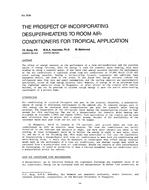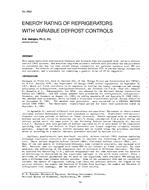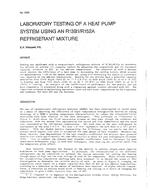-
-
Available Formats
- Options
- Availability
- Priced From ( in USD )
-
Available Formats
-
- Immediate download
-
$16.00Members pay $7.00
- Add to Cart
Customers Who Bought This Also Bought
-

3145 -- Refrigerant Flow Through Orifices
Priced From $16.00 -

3134 -- The Prospect of Incorporating Desuperheaters to R...
Priced From $16.00 -

3133 -- Energy Rating of Refrigerators with Variable Defr...
Priced From $16.00 -

3130 -- Laboratory Testing of a Heat Pump System Using an...
Priced From $16.00
About This Item
Full Description
This study addresses the effect of the walking motion on local convective heat transfer coefficient at various body sites, employing an articulated mannikin. The forced convective heat transfer coefficient (hc) is determined by the naphthalene sublimation technique. Circular naphthalene disks were affixed to various body segments of the articulated mannikin. The mannikin then simulated walking at five different gaits between 0 and 2.0 mph (0 to 0.9 m/s, 0 being stationary) under constant temperature (30°C) and wind speed (0.4~0.7 m/s depending on the body segment) in an environmental chamber. The amount of naphthalene weight loss through sublimatlon was translated to hc using the Chilton-Colburn analogy between heat and mass transfer. The results showed that arm movement during walking, unexpectedly, diminished the effective local convective transfer coefficient. Increased gait (from 0 to 2.0 mph) actually resulted in a decrease in hc, as measured on the arms and legs. On the nonmoving body trunk, no significant difference in hc was observed with increased gait. When the mannikin was held stationary and the chamber wind speed increased, a corresponding increase in hc was observed. Thus, during walking, motion of the swinging limbs, the "pendulum" effect, tends to decrease the forced convective heat transfer coefficient as observed locally on the limbs. For the walking gaits applied in this study, a 5%~7% decrease in hc was observed.
Units: Dual





